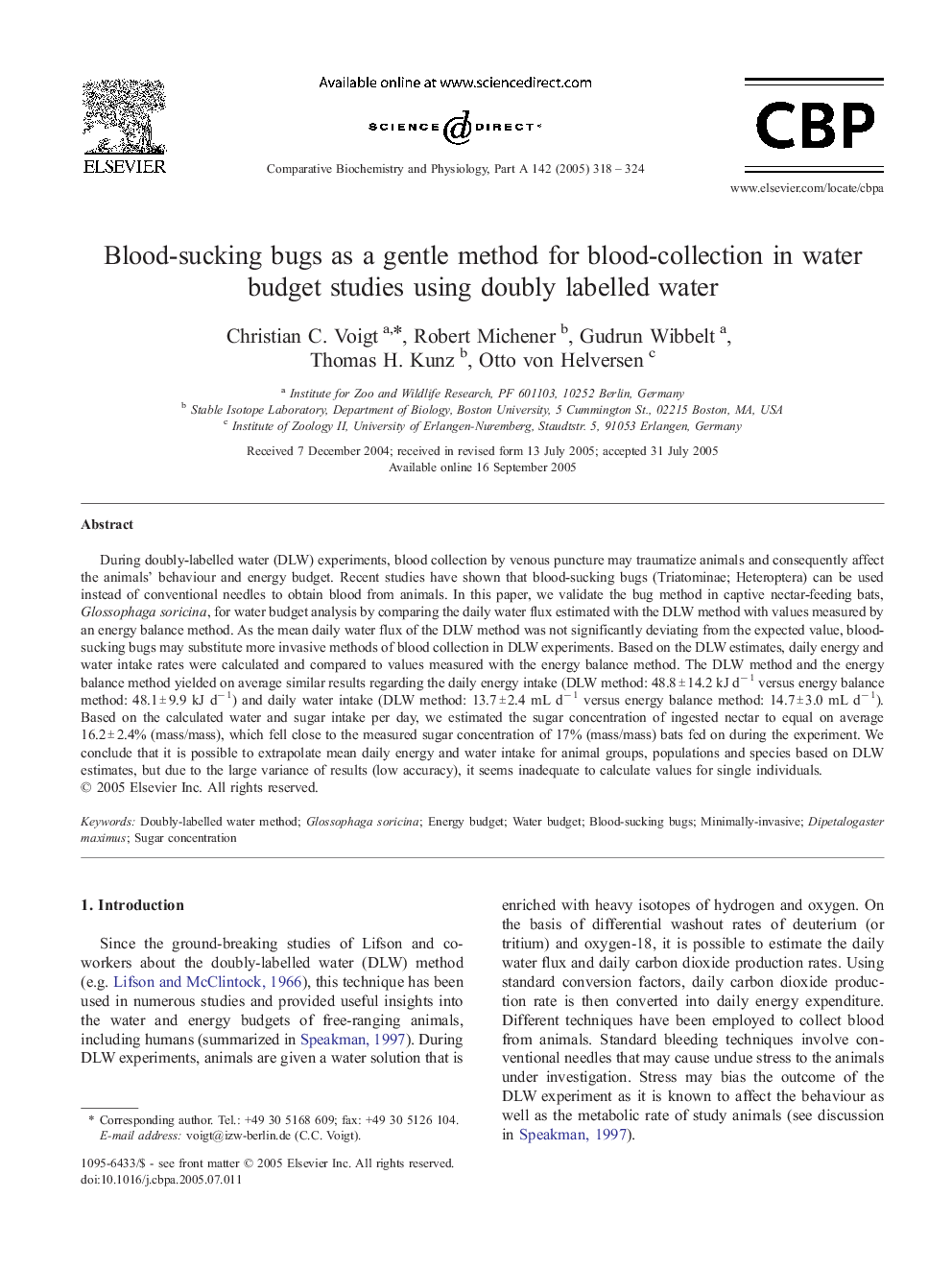| Article ID | Journal | Published Year | Pages | File Type |
|---|---|---|---|---|
| 10819313 | Comparative Biochemistry and Physiology Part A: Molecular & Integrative Physiology | 2005 | 7 Pages |
Abstract
During doubly-labelled water (DLW) experiments, blood collection by venous puncture may traumatize animals and consequently affect the animals' behaviour and energy budget. Recent studies have shown that blood-sucking bugs (Triatominae; Heteroptera) can be used instead of conventional needles to obtain blood from animals. In this paper, we validate the bug method in captive nectar-feeding bats, Glossophaga soricina, for water budget analysis by comparing the daily water flux estimated with the DLW method with values measured by an energy balance method. As the mean daily water flux of the DLW method was not significantly deviating from the expected value, blood-sucking bugs may substitute more invasive methods of blood collection in DLW experiments. Based on the DLW estimates, daily energy and water intake rates were calculated and compared to values measured with the energy balance method. The DLW method and the energy balance method yielded on average similar results regarding the daily energy intake (DLW method: 48.8 ± 14.2 kJ dâ 1 versus energy balance method: 48.1 ± 9.9 kJ dâ 1) and daily water intake (DLW method: 13.7 ± 2.4 mL dâ 1 versus energy balance method: 14.7 ± 3.0 mL dâ 1). Based on the calculated water and sugar intake per day, we estimated the sugar concentration of ingested nectar to equal on average 16.2 ± 2.4% (mass/mass), which fell close to the measured sugar concentration of 17% (mass/mass) bats fed on during the experiment. We conclude that it is possible to extrapolate mean daily energy and water intake for animal groups, populations and species based on DLW estimates, but due to the large variance of results (low accuracy), it seems inadequate to calculate values for single individuals.
Related Topics
Life Sciences
Biochemistry, Genetics and Molecular Biology
Biochemistry
Authors
Christian C. Voigt, Robert Michener, Gudrun Wibbelt, Thomas H. Kunz, Otto von Helversen,
